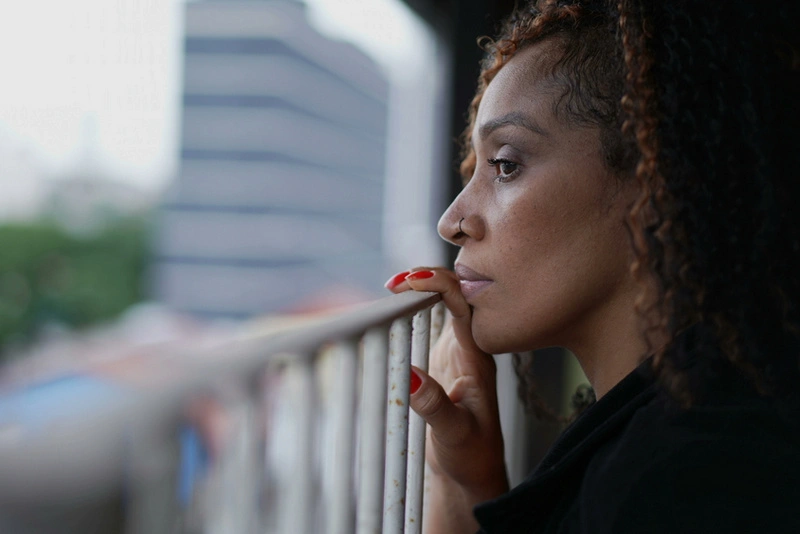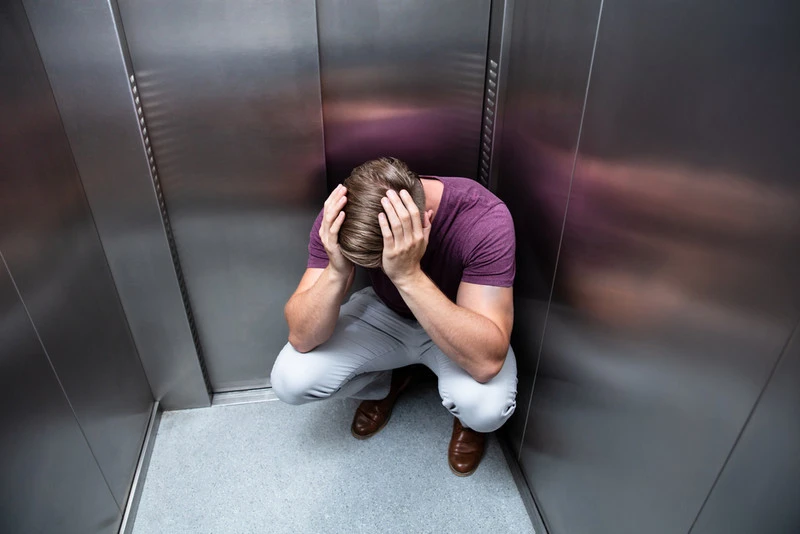While many people have historically joked about agoraphobia being a fear of sunlight, it actually shares more commonalities with social anxiety disorder, such as a fear of being around others. But what are the key distinctions, and how do you tell them apart?
Behind depression, anxiety disorders are the second most common mental health issue. Anxiety disorders can take many forms, like generalized anxiety, social anxiety, or phobias like agoraphobia.
Prevalence
- Agoraphobia affects between 1% and 1.7% of adults.
- Social anxiety affects 7% of adults, making it nearly seven times more common.
Impact
Agoraphobia and social anxiety can significantly interfere with daily function, mental health, and socialization, and while both are categorized as mental health disorders and anxiety disorders, it’s important to know the distinguishing characteristics of agoraphobia vs. social anxiety in order to get the right type of treatment.
If you are struggling with social situations, it is important to review detailed information about agoraphobia and social anxiety disorder separately.

Agoraphobia
-Understanding Agoraphobia
When looking at agoraphobia vs. social anxiety disorder, it’s important to have a proper understanding of what each condition is. Agoraphobia is defined as a condition where individuals are fearful of any situations where they might be trapped, might be embarrassed, or cannot escape. This fear can cause symptoms that last up to 6 months, and the fear itself is vastly disproportionate to the situation.
For example:
Mark is terrified of going to a local restaurant because he thinks that he won’t be able to get out if something goes wrong even though they have three exits so he doesn’t go out to eat.
-Triggers and Symptoms
Social anxiety disorder vs. agoraphobia triggers are perhaps the most easily recognizable as a difference. With agoraphobia, individuals are afraid of any public spaces where:
- They might get trapped
- They might be unable to get help
- They could be embarrassed
- They might be unable to escape
This is characterized as a fear of public spaces or a fear of being unable to get help when out in a public space or an unknown space. The key emphasis on agoraphobia lies in outdoor spaces being the triggers.
For agoraphobia, the symptoms namely center on avoiding things that might cause fear, which means avoiding being in public places that could serve as triggers, such as:
- Grocery stores
- Banks
- Coffee shops
- Public transportation
- Concerts
- Church
- Lines
- Parties
-Treatment Approaches
With agoraphobia, treatment centers on combinations of things like gradual exposure therapy and cognitive behavioral therapy (CBT). Cognitive behavioral therapy can be used to reframe thoughts, subsequent emotions, and behaviors, while gradual exposure therapy can help you overcome your fear.
For example:
With agoraphobia, a therapist might have you set incremental, achievable goals each session. If you are afraid of going to crowded stores, your goals might be:
- First, drive to the parking lot with a friend and park for five minutes.
- Second, drive to the parking lot on your own and then to another location.
- Third, get out of the car after driving to the parking lot and walk into the store.
- Fourth, get out of the car after driving to the parking lot and buy something at the store.
Social Anxiety Disorder
-Understanding Social Anxiety Disorder
Social anxiety is when an individual has significant discomfort or anxious symptoms in social situations where they think that they might be rejected, humiliated, judged, or embarrassed. This can lead people to avoid social situations where they believe that might happen. In some cases, fear and anxiety can disrupt daily function before the event itself as it leads to the event and for at least six months after the event.
-Triggers and Symptoms
Social anxiety triggers have to do with social situations rather than being outdoors in general, and the fear is not tied to a potential fear of being trapped or unable to get help but rather:
- Being judged by others
- Being scrutinized by others
- Being embarrassed in social situations
- Fear of social situations entirely
With social anxiety, the symptoms are similar, with anxiety, nervousness, fear, sweating, and shaking, but as it applies to social settings. So, someone with social anxiety might avoid the following:
- Going to parties
- Meeting new people
- Speaking in public
- Eating or drinking in public
-Treatment Options
Social anxiety uses similar treatments, namely cognitive behavioral therapy.
With social anxiety, you might think, “I am terrified that if I go to the company party, someone will laugh at me,” and your therapist can encourage you to change that to a more realistic view, such as, “I am terrified that someone will laugh at me, but if they do, it might mean they like me, and it isn’t the end of the world. Nothing bad happens to me if people laugh.”
Social skills training is another treatment used for social anxiety, as is anti-anxiety medication for acute symptom management.

Impact on Daily Functioning
With agoraphobia vs. social anxiety, there is a lot of impact on daily functioning as it applies to occupation, quality of life, and socialization.
-Social Implications
The social implications are vast, especially for social anxiety disorder, where individuals might entirely avoid social situations for fear of embarrassment or shame. Tangentially, people struggling with agoraphobia will likely develop an aversion to any and all social interaction that might take place in outdoor spaces.
-Occupational Consequences
The occupational consequences of social anxiety vs. agoraphobia look a little different. With social anxiety, occupational consequences might extend to an individual who isn’t very social with colleagues, doesn’t go to work functions, and doesn’t do well in meetings. This could have a detrimental effect on things like promotions and work performance, especially when it relates to things like presentations or work travel.
By comparison, someone who struggles with agoraphobia is unlikely to find a satisfying, long-term career because the symptoms of their condition will inhibit their ability to be in enclosed spaces like an office building or in any public place where they might find work.
-Financial Strain
Financial strain from social anxiety disorder vs. agoraphobia can be tied directly to a fear of going out. While today, there are several opportunities to work from home, individuals who struggle with agoraphobia are unlikely to work in an office, use public transportation, or stay in any enclosed place, which could severely impact their career opportunities and, by extension, income levels.
-Quality of Life
Quality of life with agoraphobia vs. social anxiety disorder can be poor. Agoraphobia significantly inhibits daily function, causing problems such that an individual might avoid using public transportation, standing in a crowd, being in an open space or an enclosed space, or even standing in line.
People with severe agoraphobia might force their partners to avoid the same activities, especially if they are in a shared company. This can make it difficult to do simple things like stand in line at a grocery store, wait with a group to get into an event, participate in a community or church setting, and maintain any social engagement.
With social anxiety, the quality of life can be equally distressing but in different ways, such that someone doesn’t maintain good social relationships and misses out on a key element that leads to overall life satisfaction. This can cause individuals to completely avoid any and all social situations, including things like promotion ceremonies, concerts, going out to dinner, or going to parties.
Summing up
When comparing social anxiety vs. agoraphobia, it’s important to understand that while both are categorized as anxiety disorders and both have different symptoms, treatment is best for either condition if it’s recognized early and applied to a correct diagnosis. There are unique features, triggers, and treatment strategies.
If you are struggling with symptoms of nervousness and social engagement, it’s important to reach out to a professional to get a diagnosis and create a personalized treatment plan.



